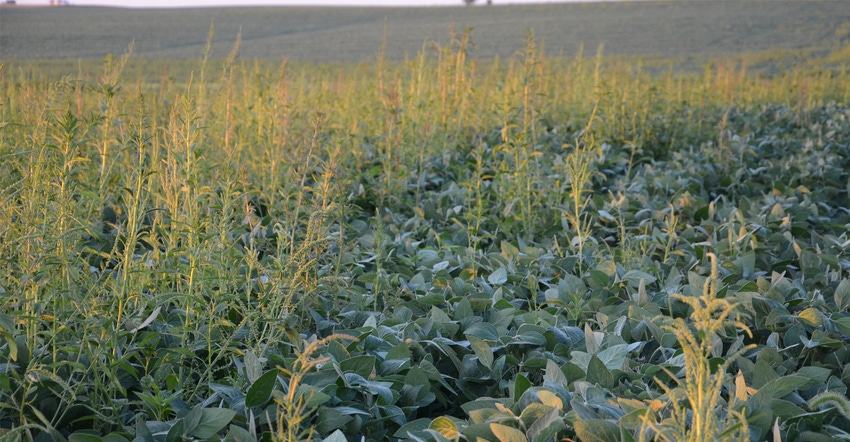February 24, 2022

Development and spread of herbicide-resistant weeds such as waterhemp and marestail are an increasing concern for soybean producers in Iowa. Based on our 2019-20 survey, waterhemp populations resistant to three modes of action are widespread across Iowa. And there's been an occurrence of five-way, multiple-herbicide-resistant waterhemp in Iowa corn and soybean fields.
Cover crops may offer an option. While cover crops cannot reliably replace over forms of weed control, an integrated weed management strategy could reduce herbicide selection pressure. And the approach could synergistically improve weed control with herbicides, providing returns on investment more quickly on farming operations with herbicide-resistant weeds.
In field experiments conducted in Boone in 2020 to 2021, cereal rye was drill-seeded at 60 pounds per acre in the second week of October 2020. The crop was terminated with glyphosate — 1.12 pounds of active ingredient per acre — at different timings in spring 2021. No cover crop plots were kept fallow until soybean planting, which occurred on May 13, 2021. The soybeans planted in 2021 were Enlist E3 soybeans tolerant to glyphosate, glufosinate and 2,4-D choline.
The two cover crop termination dates were May 6, 2021, seven days before planting; and May 23, 2021, 10 days after soybean planting.
Cereal rye accumulated a significantly amount of biomass in the late-termination timing (10 days after planting) compared to the early-termination (seven days before planting).
Marestail control
Regardless of termination timing, the cereal rye cover crop reduced marestail density by 90%, compared to the plots with no cover crops. At the time of a post-herbicide application (using glufosinate), the cereal rye crop reduced marestail biomass by 80%, compared to no cover crop.
However, at the time of soybean canopy closure 10 weeks after planting, early-terminated cover crop reduced marestail biomass by only 55%. However, late-terminated cover crop reduced marestail biomass by 90%, compared to no cover crop treatment. And herbicide programs did not influence marestail density and biomass.
There were three herbicide treatments:
post: glufosinate only
residual at cover crop termination, followed by post: S-metolachlor and fomesafen, followed by glufosinate
residual with post: S-metolachlor and fomesafen with glufosinate.
Waterhemp control
The presence of a cover crop and termination timing had a significant interaction for waterhemp density. Regardless of termination timing, the cereal rye cover crop reduced waterhemp biomass by 20%, compared with no cover crop plots.
At the time of the post-application of glufosinate, the late-terminated cover crop reduced waterhemp density by 70%. The early-terminated cover crop reduced waterhemp density by only 55%, when compared to plots with no cover crop.
The herbicide program alone did not influence waterhemp density; however, there was a significant interaction of the herbicide program with cover crop and termination timing. At 10 weeks after planting, cover crop and residual herbicide at the time of termination reduced waterhemp density by more than 65% compared, to no cover crop and no residual herbicide (glufosinate only). The same was true for when residual herbicide was delayed until the post-timing in soybean.
In the early-terminated cover crop, waterhemp density from the residual herbicide was 55% less when applied at the time of termination, versus delaying the residual herbicide until the post-timing. However, application timing of the residual herbicide did not influence waterhemp density in the late-terminated cover crop plots. Although there was an initial slow growth of soybean in late-terminated cover crop plots (dry spring), soybean grain yield did not differ significantly from early-terminated cover crop plots.
Results in review
There were two benefits demonstrated. Delaying cover crop termination until 10 days after soybean planting — planting green — was more effective on marestail and waterhemp control compared to the early-termination timing (seven days before planting), irrespective of the herbicide program used.
This offers greater flexibility in application timing of soil residual herbicide in soybean to control late-emerging waterhemp. Overall, a cereal rye cover crop as an integrated weed management tactic could aid in managing herbicide-resistant weeds, while preserving the utility of current herbicide options for soybeans.
Jha is an ISU associate professor and Extension weed specialist with the Department of Agronomy.
You May Also Like




